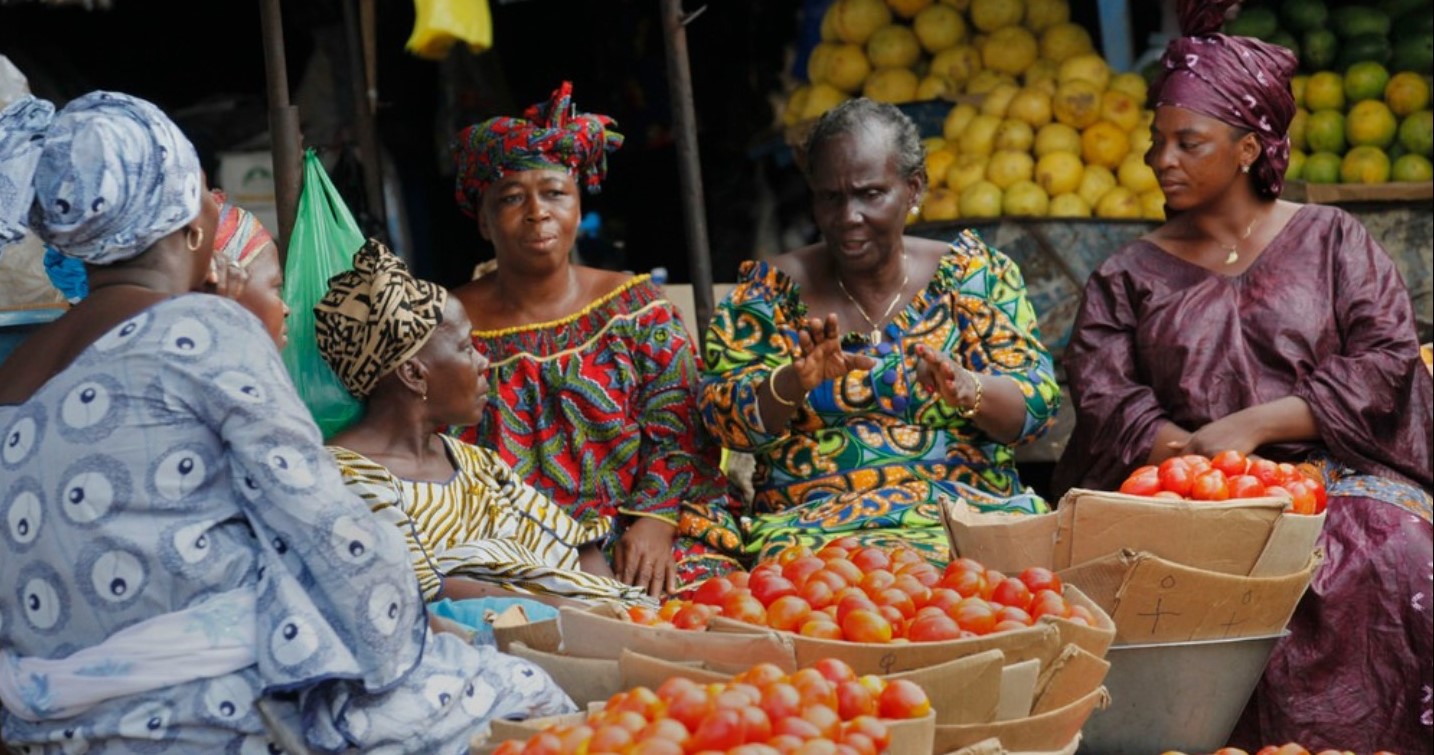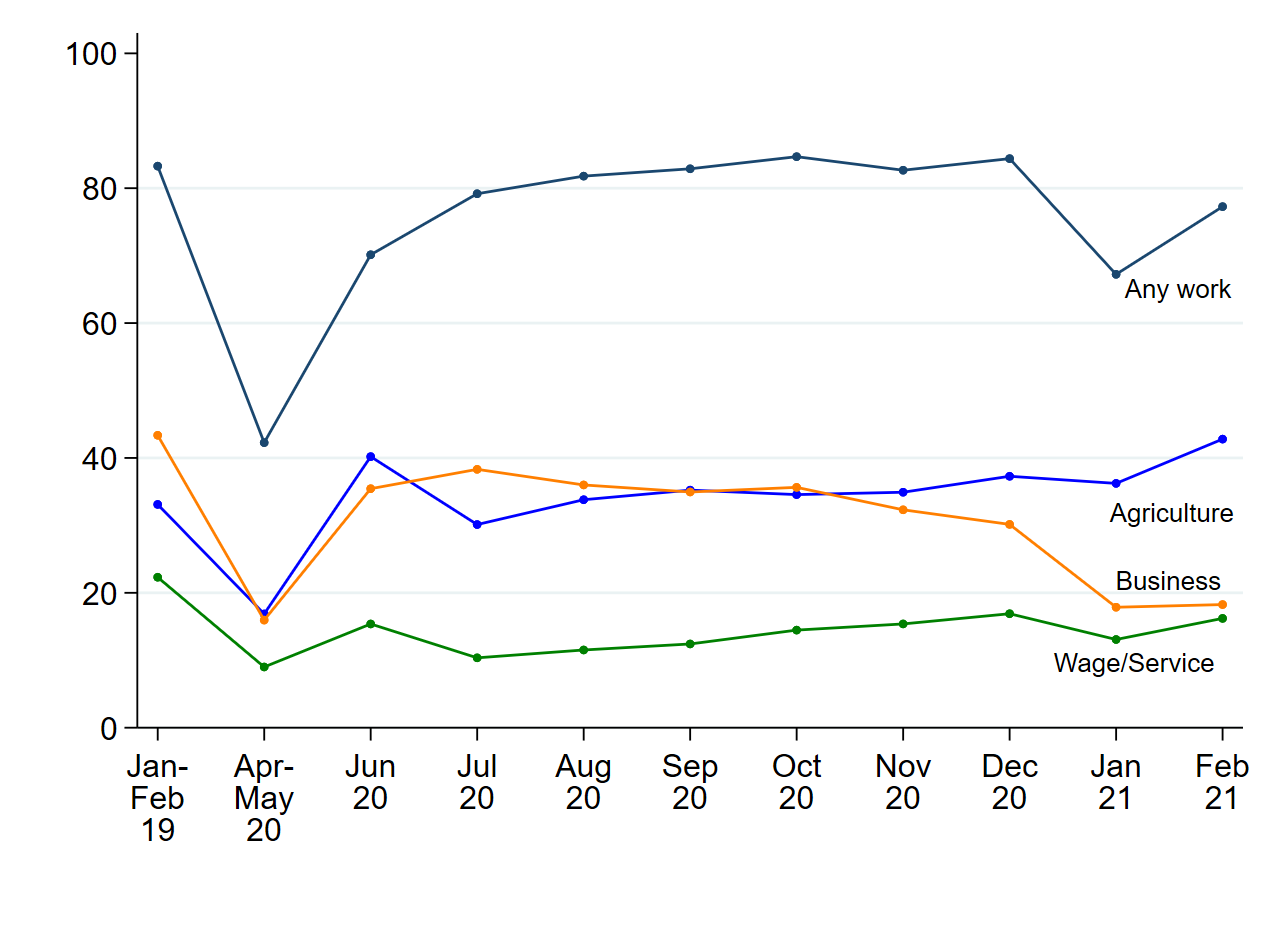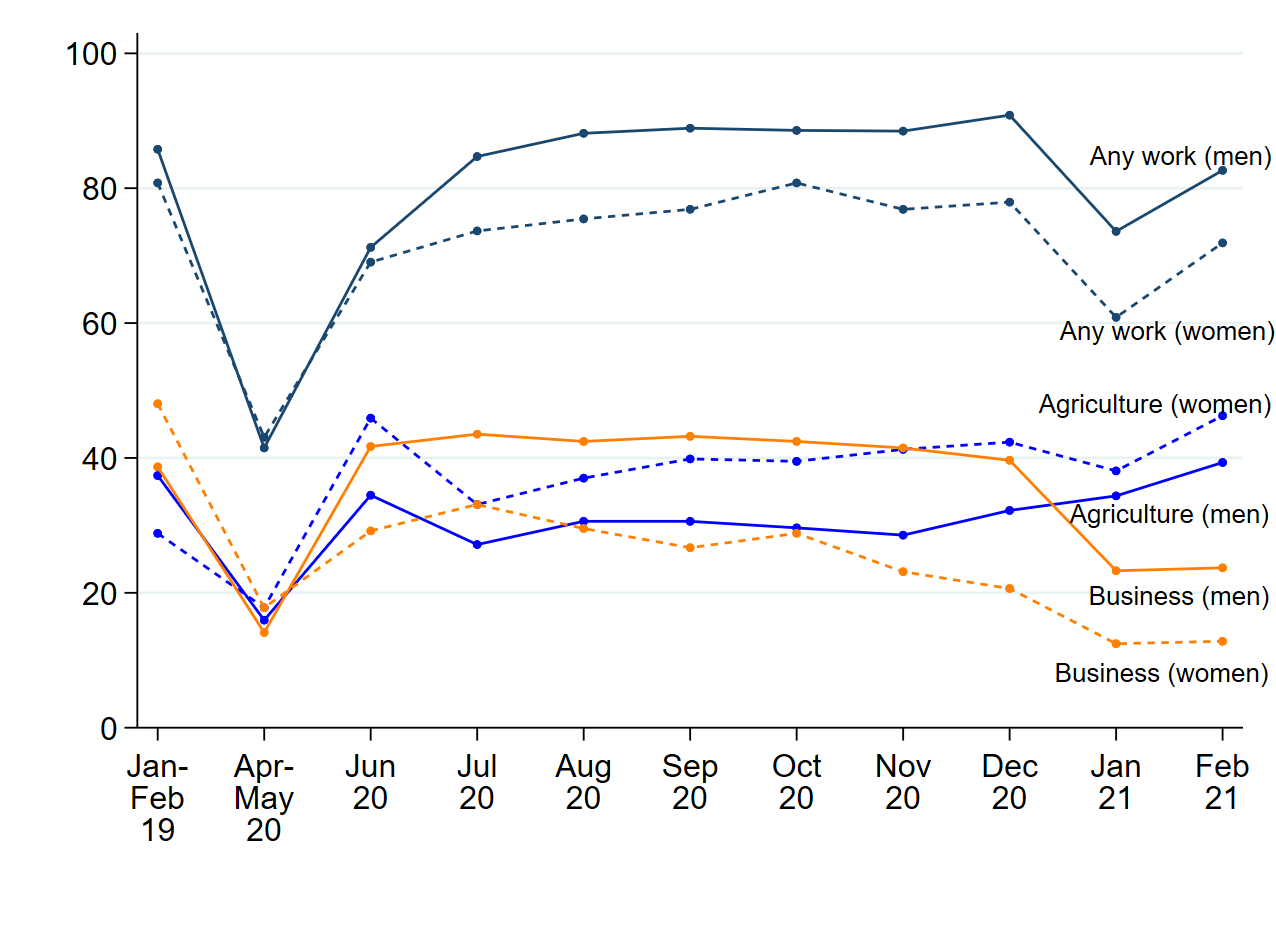La dynamique du marché du travail en temps de COVID 19
IFAD Asset Request Portlet
Agrégateur de contenus
La dynamique du marché du travail en temps de COVID 19
Par Marup Hossain

Over a year and a half into the COVID-19 pandemic, what do we know about how the labour market in developing countries is reshaping itself?
We know that, at the onset of the pandemic, employment declined by up to 50 per cent in some developing countries. Their economic recovery rates were also projected to be slower than the rates in developed countries, especially in the absence of solid contingency measures and low vaccine availability. Yet, we know little about how exactly the labour market has evolved during this time. We know even less about the gendered effect of COVID-19 on employment in developing countries, where women are already lagging behind men in terms of labour market participation and earnings.
To answer these questions, we took Nigeria as a case study. Nigeria is the most populous country in Africa and has one of the continent’s largest economies. Nevertheless, about 40 per cent of its population lives below the $1.90 per day poverty line, and another 30 million are at risk of becoming poor. Using publicly available data, thanks to the innovations in phone-based data collection during the pandemic, we were able to track the pre- and post-COVID working status of a Nigerian adult cohort over a period of about two years.
We combined data from the General Household Survey 2018/2019 (i.e., pre-COVID data) and the COVID-19 National Longitudinal Phone Survey 2020, conducted by the Nigerian Bureau of Statistics and the World Bank. The latter survey has collected data every month since the beginning of the pandemic, drawing upon households from the former survey. Ultimately, we were able to analyze trends in the employment status of 1,209 unique individuals between January 2019 (pre-COVID) and February 2021. The vast majority of them (92 per cent) are household heads, and about 25 per cent of the cohort are women.

As the above figure shows, the job recovery rate among the survey respondents was relatively swift following the initial spread of the virus. Moreover, the recovery continued until the second wave of the pandemic struck in December 2020. In terms of specific sectors, it appears the agriculture sector (crop farming, fisheries, livestock, forestry) has been working as a buffer by absorbing employment lost from other business activities.
These overall trends in work status, however, mask the gendered effects of the COVID-19 pandemic. Although the pandemic has affected both men and women, it appears women have experienced more significant job loss and slower recovery, as seen in the figure below. Moreover, there is a substantial sectoral displacement: women's engagement has seen a bigger increase in agricultural activities and a greater reduction in business activities compared to men’s engagement.

Naturally, this raises a question: why have women been disproportionately affected by the pandemic? There could be several possible explanations. First, many women hold part-time or temporary jobs, which are more likely to be terminated during a shock. Second, a lack of savings and access to credit may widen the existing divides in accessing input and output markets, pushing more women out of work. Finally, the significant reduction in women’s business activity could be due to the informal nature of their work in this sector (e.g., trading in local marketplaces or home-based processing), which is more likely to be affected by the pandemic.
There can be several implications of such disproportionate effects on women. First, studies show that the longer an unemployment spell lasts, the more difficult it is for women to reintegrate into the labour market; their likelihood of returning to work also reduces. Second, the welfare of women who are starting agricultural activities after working in the business sector may be lower over the long term, as studies have shown that the productivity of women-managed land in some African countries is lower due to the additional constraints they face compared to men. Therefore, the COVID-19 pandemic may aggravate women's economic empowerment if the returns of agricultural activities are lower than those of business activities.
IFAD's Rural Poor Stimulus Facility (RPSF), a response to the pandemic, is already addressing a few of these issues. Take the example of the "personalized agricultural advice through mobile phones" intervention, the result of a partnership between IFAD and Precision Agriculture for Development, targeting about 1.7 million small-scale farmers in Kenya, Nigeria and Pakistan. To make this intervention more gender-sensitive, IFAD would need to tailor it to reach women, because women usually have less access to mobile phone services than men. Furthermore, it will be important to ensure that individuals newly joining the agricultural sector are included in these types of interventions, because they need more support to initiate this activity from scratch. Finally, of course, the big challenge lies in bringing the lost business-sector jobs back, perhaps through rural finance interventions or private sector partnerships.
Read the full study here.
Learn more about IFAD’s work in Nigeria.
Date de publication: 14 septembre 2021
